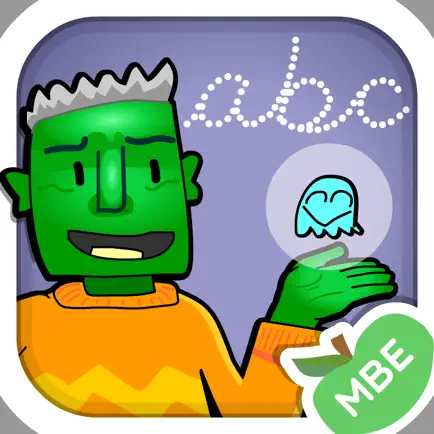
Spooky Letters Lite Hack 1.5 + Redeem Codes
Handwriting fun
Developer: madebyeducators
Category: Education
Price: Free
Version: 1.5
ID: com.mbe.scaryletterslite
Screenshots



Description
Spooky Letters allows your child to practice letter forming in both cursive (joined up) and pre-cursive format. Letters are sounded out phop netically to allow your child to develop skills of breaking down words, particularly useful for children with dyslexia.
Completion of capital letters reveals a simple phonics based spelling game. Completion of either style of lower case letters is rewarded by a puzzle which reveals the Spooky character in the box.
10 Benefits of Teaching Cursive Handwriting
1.Relative ease in introducing cursive penmanship to preschoolers.
2.Prevents reversals and confusion of letters
3.Enhances spelling ability
4.Develops internal control systems that can be used as tool for learning
5.Potential for errors are diminished
6.Improved reading skills
7.Enforces the skills for patterns in reading and writing
8. Prevents erratic spaces between letters and words
9. Helps Left Handed Children
10.Use as a tool to put thoughts on paper quickly and easily
Conclusion:
We should teach our children ‘Cursive First, Print Later’.
Source: Samuel L. Blumenfield, "How Should We Teach Our Children to Write? Cursive First, Print Later!"
The British Dyslexia association recommend that children learn the continuous cursive style. The cursive style has some significant advantages for Dyslexic students. The key advantages to this system are:
* By making each letter in one movement, children’s hands develop a ‘physical memory’ of it, making it easier to produce the correct shape;
* Because letters and words flow from left to right, children are less likely to reverse letters which are typically difficult (like b/d or p/q);
* There is a clearer distinction between capital letters and lower case;
* The continuous flow of writing ultimately improves speed and spelling.
Spooky Letters A- Z posters and learning activities are available for free on our website.
Completion of capital letters reveals a simple phonics based spelling game. Completion of either style of lower case letters is rewarded by a puzzle which reveals the Spooky character in the box.
10 Benefits of Teaching Cursive Handwriting
1.Relative ease in introducing cursive penmanship to preschoolers.
2.Prevents reversals and confusion of letters
3.Enhances spelling ability
4.Develops internal control systems that can be used as tool for learning
5.Potential for errors are diminished
6.Improved reading skills
7.Enforces the skills for patterns in reading and writing
8. Prevents erratic spaces between letters and words
9. Helps Left Handed Children
10.Use as a tool to put thoughts on paper quickly and easily
Conclusion:
We should teach our children ‘Cursive First, Print Later’.
Source: Samuel L. Blumenfield, "How Should We Teach Our Children to Write? Cursive First, Print Later!"
The British Dyslexia association recommend that children learn the continuous cursive style. The cursive style has some significant advantages for Dyslexic students. The key advantages to this system are:
* By making each letter in one movement, children’s hands develop a ‘physical memory’ of it, making it easier to produce the correct shape;
* Because letters and words flow from left to right, children are less likely to reverse letters which are typically difficult (like b/d or p/q);
* There is a clearer distinction between capital letters and lower case;
* The continuous flow of writing ultimately improves speed and spelling.
Spooky Letters A- Z posters and learning activities are available for free on our website.
Version history
1.5
2018-01-09
This app has been updated by Apple to display the Apple Watch app icon.
Updates for latest OS
Updates for latest OS
1.4
2018-01-03
Updated for latest OS
1.3
2015-10-20
Thanks for all of the feedback, we are updating to make the choice of cursive style clearer and have Optimised for iPhone 6 and 6+
1.2
2014-10-31
A little more spooky!
1.1
2014-10-14
Thanks for all of the feedback. We have improved the user experience and introduced a letter blending feature.
1.0
2013-10-15
Ways to hack Spooky Letters Lite
- iGameGod (Watch Video Guide)
- iGameGuardian for iOS (Watch Video Guide) or GameGuardian for Android (Watch Video Guide)
- Lucky Patcher (Watch Video Guide)
- Cheat Engine (Watch Video Guide)
- Magisk Manager (Watch Video Guide)
- CreeHack (Watch Video Guide)
- Redeem codes (Get the Redeem codes)
Download hacked APK
Download Spooky Letters Lite MOD APK
Request a Hack
Ratings
1 out of 5
1 Ratings
Reviews
Jdsmom1,
Not correct cursive
The lowercase b and s are not correct American English cursive. Very confusing.





